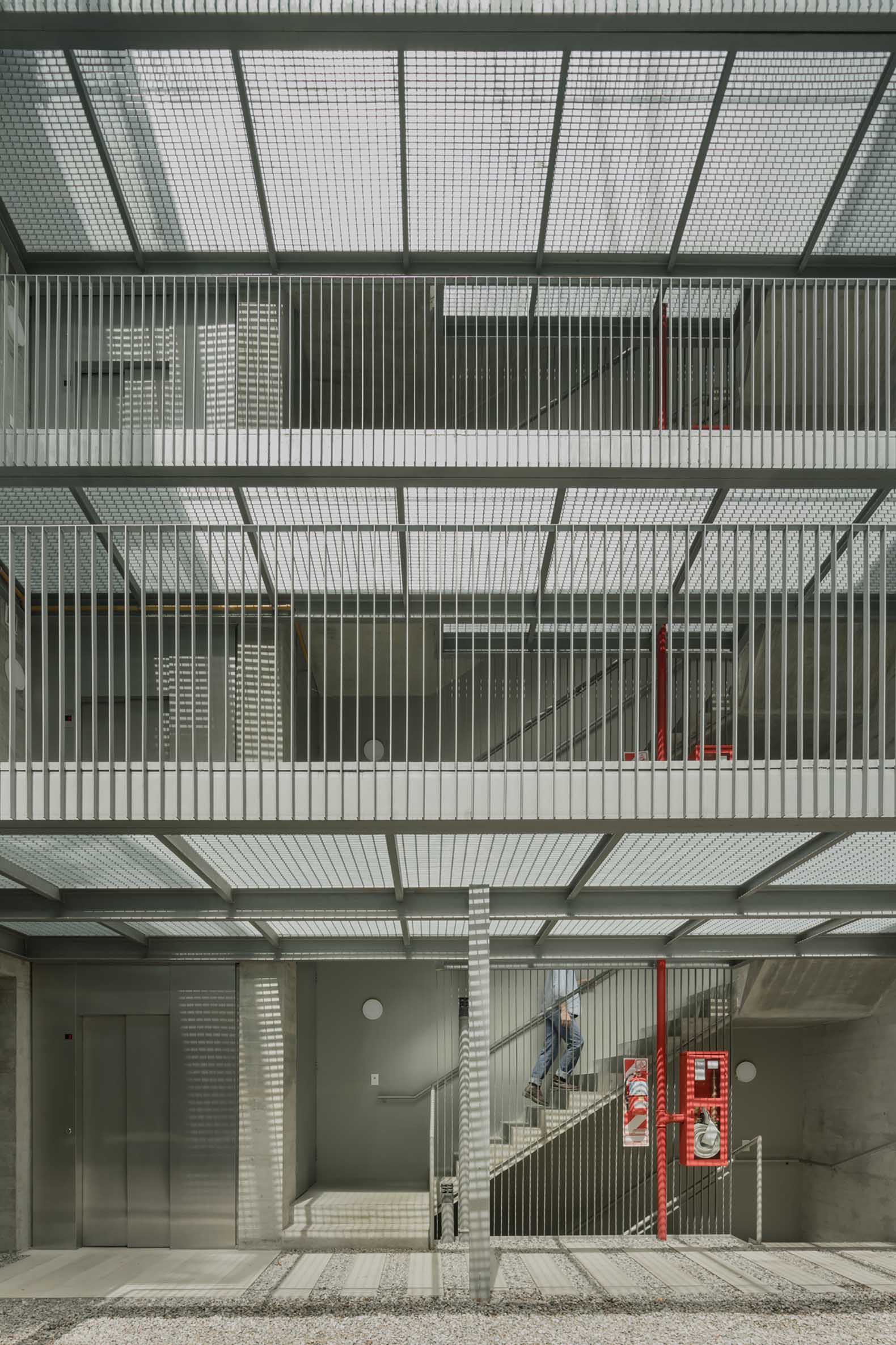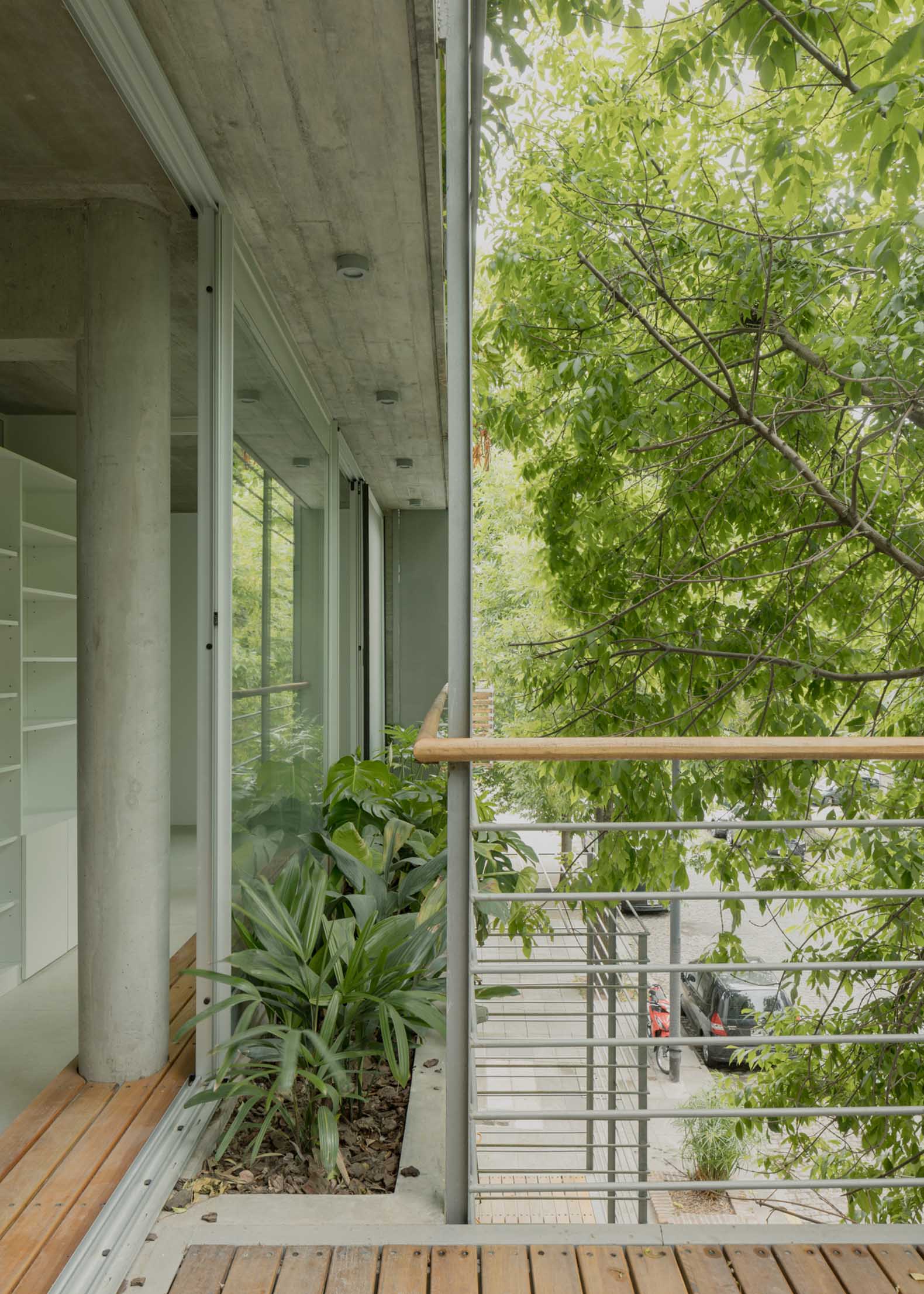Estudio PLANTA's design was built on a very elongated rectangular plot. On one of the narrow sides facing the street, the new façade is built, designed to complement the first project, Vilela I, built years ago.
From the façade, the project comprises two housing bodies, connected by a third element that houses the vertical communication pieces (stairs and elevator) connected to a generous patio. The interior housing module enjoys the tranquillity of the large patio located at the back of the plot.
Compositionally, the attention paid to the exterior façades stands out, as very permeable thanks to their metal structure. Of particular significance is the modulation of the interior façade made of exposed reinforced concrete, whose modulation is enriched by the window planters that facilitate the treatment of an interesting vertical garden. The interior façade is also a reflection of the composition of the access façade with a large terrace on the first floor and intelligent gardening on the rest of the floors.

Vilela II Building by Estudio PLANTA. Photograph by Federico Cairoli.
Project description by Estudio PLANTA
Second chance. This building is contiguous to a previous work of the studio: Vilela 1.
Because of this location, the first question arises: is it a continuation of the previous work? or, what topics to continue? What do we want to improve? Since the place is the same, the urban situation is (almost) the same. But it is 12 years later.
What was resolved was to continue the tiles and the pots -but this time specifically- to avoid corrosion, to the detriment of a lighter aesthetic and the amount of soil to plant.
 Vilela II Building by Estudio PLANTA. Photograph by Federico Cairoli.
Vilela II Building by Estudio PLANTA. Photograph by Federico Cairoli.
The building consists of 3 different typologies, all interns, between the front and the internal courtyard. At the customer's request, the plants are shrubby (not climbing) and the bars are only at the bottom of the span. The internal patio is entirely concrete, and houses pots in each window.












































































